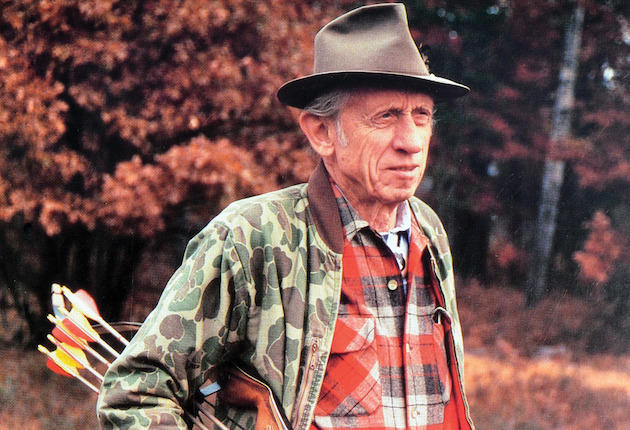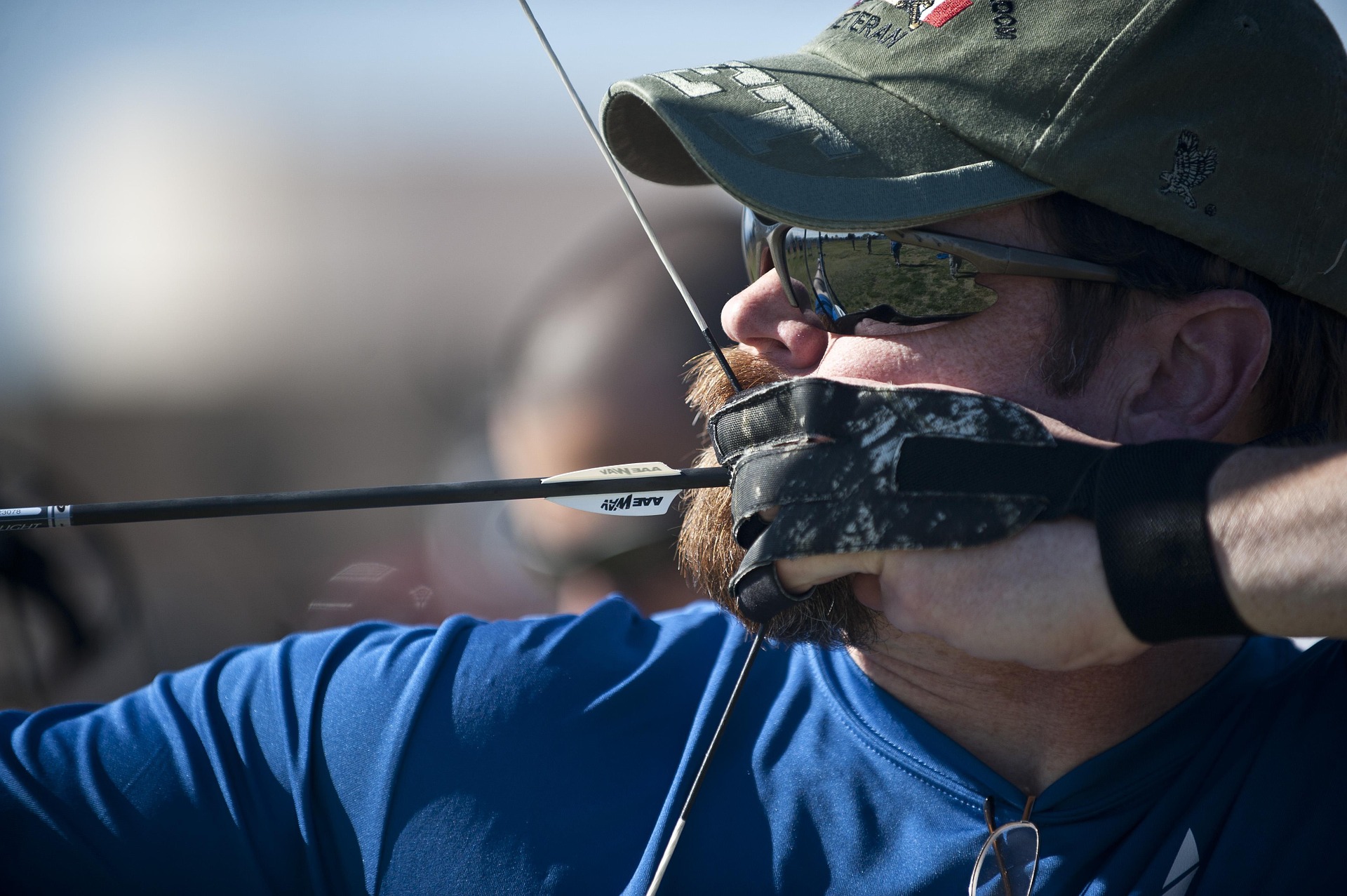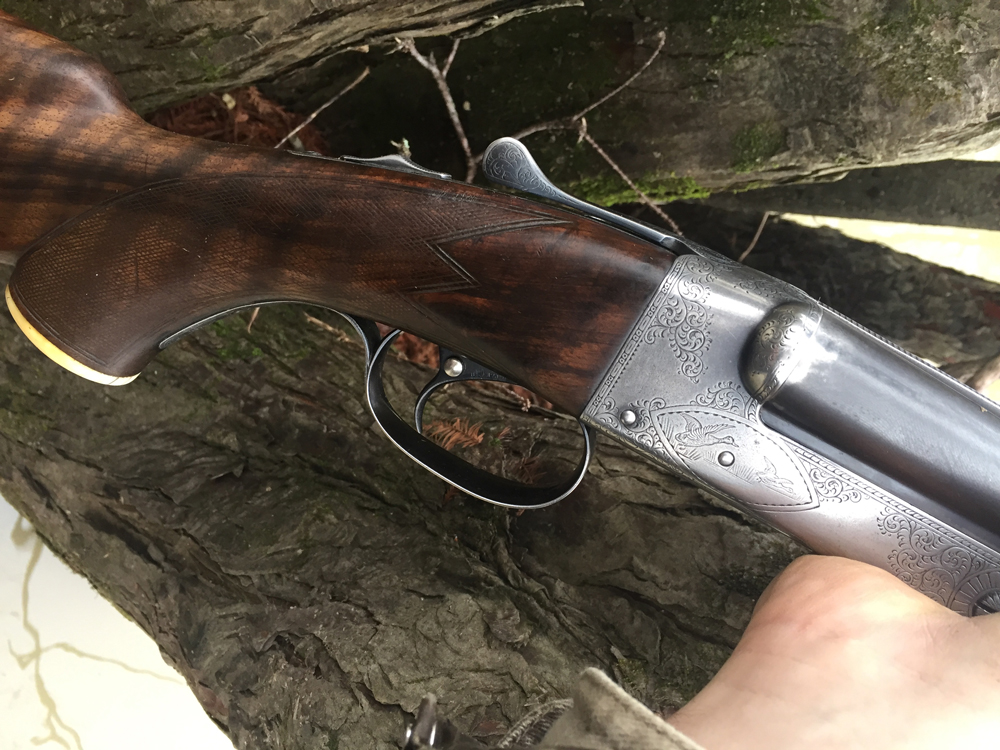Note: This story originally appeared Oct. 16, 2015.
If Fred Bear had been born a hundred years earlier, he might have been one of the mountain men scouting the Rockies on hunting and trapping expeditions. He could have been one of Jim Bridger’s or Kit Carson’s men, or he might have crossed the Cumberland Gap with Daniel Boone. Born too late for all that, Bear was a pioneer of another sort who almost single-handedly launched America’s fascination with archery and bowhunting.
Fred Bear didn’t start bowhunting until age 29. From 1931 and continuing for the next 50 years he would pursue everything from Bengal tigers in India to polar bears in the Arctic. Among all his shots at big game, one in particular stands out.
In his book, The Adventures of Fred Bear, the legendary archer relives his hunt for a magnificent stone sheep ram, using only his trusty recurve bow.
After crossing the shale we were on a grassy steep sidehill. Charles [his guide] ahead and I panting along in back of him. Looking back I was surprised to see three rams in a depression we had passed. We kept going because the lone ram we had seen first was the biggest.
Just before reaching the top, I saw the big fellow crossing the next draw beyond. I signaled to Charles. He came back and we watched him go over the next ridge. We continued after him and routed a flock of seven rams on the other side. No time for them, however.
Circling back we peeked over a ridge beside a glacier. Our ram was about 150 yards below and just going over the next knoll. When he was out of sight, we ran and slid down the fine shale just in time to see him disappear over the next ridge. We ran again and there he was about 35 to 40 yards away. Just his head showing, looking at us. He knew we were after him.
I do not like a head-on shot. Just a few inches off the mark will only wound, and the hole through the rib cage into the chest cavity is no larger than a baseball. In addition, to shoot an arrow at full draw to clear the ridge would hit him in the head.
The only way was a short draw to lob the arrow over the ridge and drop it into the brisket. If I had been alone, I would not have taken the shot. But Charles barked, “Shoot quick!” I felt that I was on the spot and to hesitate would have been to lose face with the Indian.
The arrow went in a perfect line but I had a sick feeling that after it cleared the ridge, it had dropped too low. The head disappeared, and Charles ran over while I tried to regain my breath. When he got there, he turned to me with a wide grin.
We found the ram jammed against a rock halfway down the shale slide. He had run about 60 yards and died on his feet, then rolled down the mountain until he hit a rock.
He was a beautiful animal. Horns not broomed. A 41 ½-inch curl and 27-inch spread. There was a big hole right in the middle of the brisket. I was very lucky to get such a large ram on the second day of hunting and would have been quite happy with a smaller one.
To read more about great shots and great hunts, subscribe to Sporting Classics or pick up the current issue on newsstands today!
 A superb collection of stories that captures the very soul of hunting. For hunters, listening to the accounts of kindred spirits recalling the drama and action that go with good days afield ranks among life’s most pleasurable activities. Here, then, are some of the best hunting tales ever written, stories that sweep from charging lions in the African bush to mountain goats in the mountain crags of the Rockies; from the gallant bird dogs of the Southern pinelands to the great Western hunts of Theodore Roosevelt. Great American Hunting Stories captures the very soul of hunting. With contributions from: Theodore Roosevelt, Nash Buckingham, Archibald Rutledge, Zane Grey, Lieutenant Townsend Whelen, Harold McCracken, Irvin S. Cobb, Edwin Main Post, Horace Kephart, Francis Parkman ,William T. Hornaday, Sc.D, Rex Beach, and more. Buy Now
A superb collection of stories that captures the very soul of hunting. For hunters, listening to the accounts of kindred spirits recalling the drama and action that go with good days afield ranks among life’s most pleasurable activities. Here, then, are some of the best hunting tales ever written, stories that sweep from charging lions in the African bush to mountain goats in the mountain crags of the Rockies; from the gallant bird dogs of the Southern pinelands to the great Western hunts of Theodore Roosevelt. Great American Hunting Stories captures the very soul of hunting. With contributions from: Theodore Roosevelt, Nash Buckingham, Archibald Rutledge, Zane Grey, Lieutenant Townsend Whelen, Harold McCracken, Irvin S. Cobb, Edwin Main Post, Horace Kephart, Francis Parkman ,William T. Hornaday, Sc.D, Rex Beach, and more. Buy Now 



